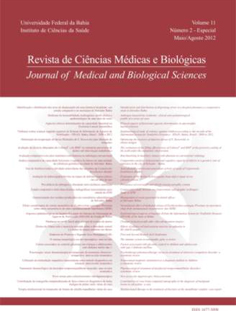Novo acesso para colecistectomia videolaparoscópica
DOI:
https://doi.org/10.9771/cmbio.v11i2.6699Palavras-chave:
Colecistectomia. Cálculos Bibliares. Colelitíase.Resumo
A grande evolução cirúrgica, nas últimas décadas, deve-se ao desenvolvimento técnico da videocirurgia. São inúmeros os benefícios e, atualmente, quase nunca se apontam desvantagens, embora ainda se busquem procedimentos menos invasivos, que provoquem menor dor e que tenham melhor resultado estético. Objetivamos, com este trabalho, demonstrar uma nova variação técnica, de fácil exequibilidade e sem modificações no que diz respeito à segurança. É proposto um acesso na parede lateral do abdome, para inserção dos trocartes, das pinças operatórias e da ótica, e outro na cicatriz umbilical, de forma que, quando o paciente estiver em posição frontal ao expectador, as cicatrizes não sejam visíveis. Os trocartes laterais são posicionados na linha axilar média, pouco acima da crista ilíaca anterossuperior. Foram incluídos, nesse estudo, pacientes com diagnóstico ultrassonográfico de litíase biliar com indicação de cirurgia, e excluídos pacientes com alguma comorbidade, portadores de cicatriz abdominal, e pacientes com Índice de Massa Corporal (IMC) > 30 kg / m2. 12 casos foram operados sem intercorrências ou qualquer complicação. Identificaram-se variações anatômicas da artéria cística e um ducto anômalo no leito da vesícula em um dos pacientes. Em dois pacientes, usou-se drenagem fechada pelo orifício lateral, e um deles recebeu outro trocarte de 5 mm à direita, para melhor exposição da vesícula biliar. Todos os pacientes receberam alta dentro do prazo previsto para cada caso. A técnica apresentada neste estudo reúne características que permitem considerá-la uma opção viável para o tratamento cirúrgico da litíase biliar.
Abstract
Introduction: The large surgical evolution in recent decades is due to the technical development of video-surgery. There are countless benefits and currently almost never are disadvantages pointed out; however, less invasive procedures are still to be sought that cause less pain and have better aesthetic result. This study aims to demonstrate a new technique variation of easy performance and without modifications with regard to safety. Methods: The access to the lateral wall of the abdomen for insertion of the trocars is proposed, as for the surgical and optical forceps and another on the umbilical scar, so that when the patient is in prone position to the viewer, the scars are not to be visible. The lateral trocars are placed in the midaxillary line, just above the anterosuperior iliac crest. The study included patients with ultrasonographic diagnosis of gallstones with indication for surgery, and excluded patients with any comorbidity, patients with a Body Mass Index (BMI)> 30 kg / m2, and those with anatomical defects and previous abdominal scars. Results: A series of 12 patients underwent surgery without any intercurrence or complications. Anatomic variations were identified of cystic artery and an anomalous duct in the gallbladder bed in one patient. In two patients closed drainage was used to by the side hole and one of them received another 5mm trocar on the right, for better exposure of the gallbladder and biliary ductal system. All patients were discharged within the period specified for each case. Conclusion: The technique presented in this study combines features which can be considered as viable option for the surgical treatment of gallstones.
Downloads
Downloads
Publicado
Como Citar
Edição
Seção
Licença
A Revista de Ciências Médicas e Biológicas reserva-se todos os direitos autorais dos trabalhos publicados, inclusive de tradução, permitindo, entretanto, a sua posterior reprodução como transcrição, com a devida citação de fonte. O periódico tem acesso livre e gratuito.






